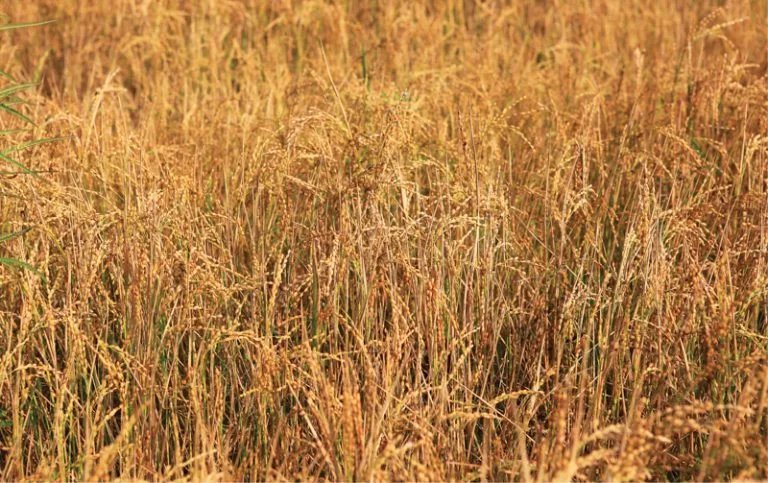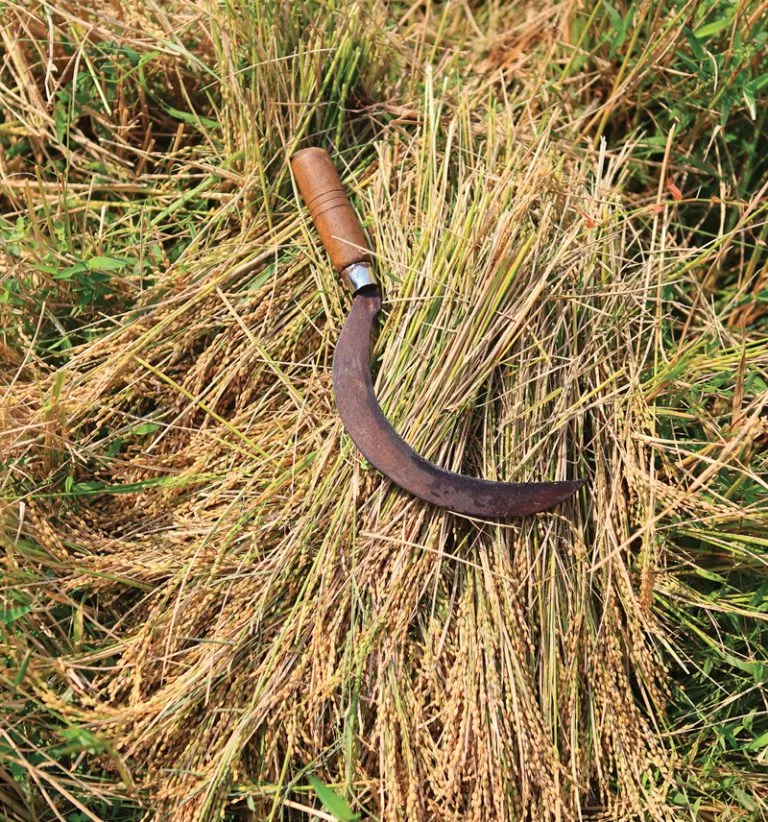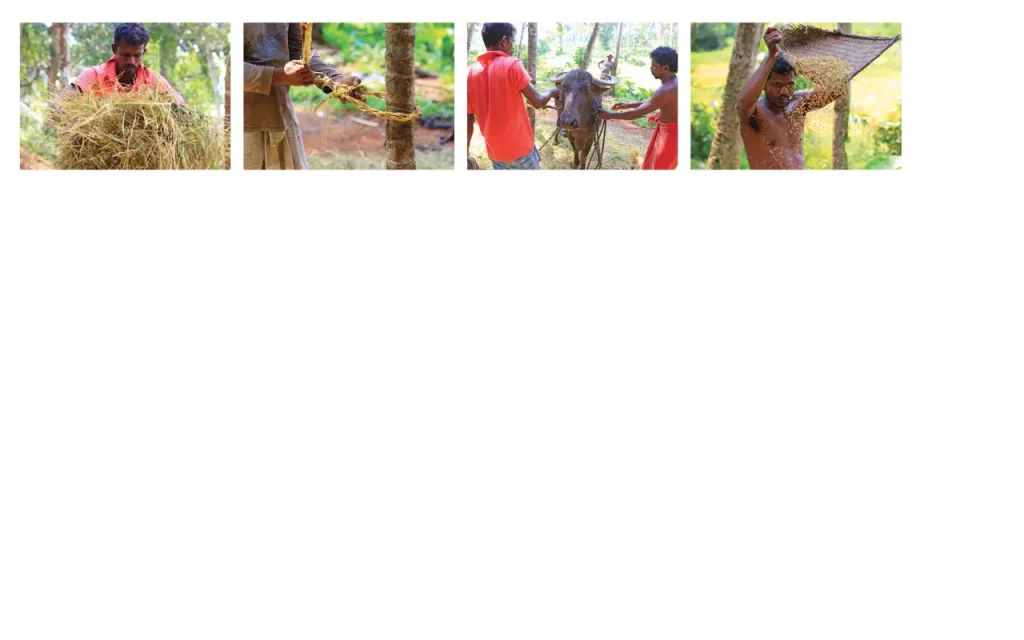
Paddy harvesting, steeped in tradition and rituals, offers a glimpse into an ancient way of living and thinking, the last month of the Yala cultivation season is August.
Words Yomal Senerath-Yapa | Photographs Vishwathan Tharmakulasingham

Dekatana is not a long drive from Colombo, but within its heart is preserved more than a few vestiges of a very ancient way of living. Leave the semi urban townlets and come to this dappled village, where the buffalo roam the pathways, shaded with jak trees, with the villagers getting ready for the traditional gathering of paddy harvest.
The preliminaries begin three weeks before the actual cutting of paddy. The first step is to daub the threshing ground using cow dung. Then a large pit is dug in the middle of the ground, and a healthy sturdy puvak (arecanut) trunk, dissected to two if too tall, is inserted firmly into the pit.
On the auspicious day, the villagers turn out in full force. Before each farmer cuts his first fistful, he worships the ground before him reverentially. Each golden swathe is then garnered with the sickle. The paddy cutters move to a rhythm, a very ancient rhythm; known also to their distant ancestors through millennia; backs bent; hand in unison with sickle. Once all these fields of softly swaying evening-gold paddy have been felled, the elegant white egrets arrive in flocks, pecking on the ground close to the mooching cows.
The harvest now heaped, it’s time to make way to the threshing ground. With the precious paddy balanced on his head, the farmer circumambulates the pole, round and round the perimeters of the threshing ground, for three times. Next, a man is sent to cut out a mature coconut leaf of pale yellow. This is braided thickly, so that its strength rivals that of a strong rope. This, called the kaaduwa, is then attached to the puvak pole. To the kaaduwa is again tied a very strong rope, and the threshing buffaloes have to be tied to this rope.
Making the buffaloes obey the men is a tricky, if not a dangerous, task. They tend to run away due to reluctance, and constantly must be brought back to position. While two stocky, tame water buffaloes were used in this instance, the domestic bulls can also be used for the task just as easily. The pair of buffaloes, thus attached to the pole, require a person to prompt them from the behind so that they will continue the circumambulating. The farmer urges them on with his admonishing “oh-oh-ho” and their fetlock hooves grind the paddy well.
Before each step of harvesting, the villlagers solemnly worship the ground before them.
After the first threshing, paddy must be tossed and disturbed. This is done with a lean stick which has a sinuously curved hook at the end, called dethigoiyawa. The fine hook makes sure that all the paddy at the bottom that would otherwise evade the hooves is tossed to the top. Then threshing resumes.

The threshing is a laborious task, and moreover a dizzy one, so leading the buffaloes is taken in turns.
Once it is over, and the paddy leaves removed, the rice now left on the floor should be heaped together. This is done using the home-made broomstick called the bolatte, made with a hewn stick with some pamba wel or spongy wild creepers tied to one end.
The final step is to winnow the rice. With the traditionally woven winnowing fan, the rice is gently strewn on to the ground. Then this is fanned, again with the use of the winnowing fan, so that the chaff is softly blown away. Now, all that should be done is to dry the rice in the sun for a few days.
The old measuring equipment are still used to determine the quantity of the rice. The laaha is a very strong woven basket. Five laahas make up a beraya which is a wooden box with handles. The baaga – (or half-) beraya is made up of two and a half laahas.
Before each step of harvesting, the villagers solemnly worship the ground before them. Religion is very thickly woven into the total process which is made more manifest by the fact that the very first harvest that is gathered, ‘aluth sahal’ as it is called in Sinhala, is invariably, unfailingly, dedicated to the gods.



